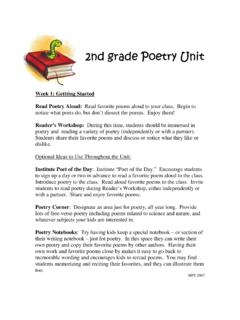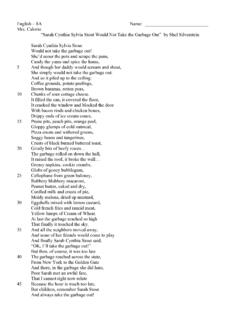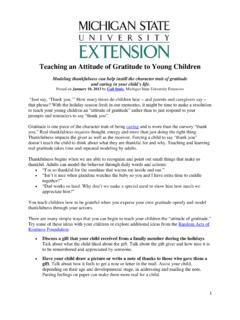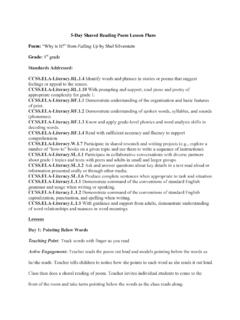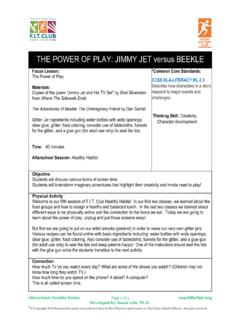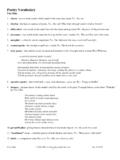Transcription of Peer Reviewed Generation to Generation: The Heart …
1 EScholarship provides open access, scholarly publishingservices to the University of California and delivers a dynamicresearch platform to scholars ReviewedTitle: Generation to Generation : The Heart of Family MedicineJournal Issue:Journal for Learning through the Arts, 8(1)Author:Winter, Robin O, JFK Medical CenterPublication Date:2012 Publication Info:Journal for Learning through the Arts, Center for Learning in the Arts, Sciences and Sustainability,UC IrvinePermalink: :I would like acknowledge the assistance of Rebecca Van Ness and Nanette Soffen in thepreparation of this Bio:Robin O. Winter, MD, MMM has been the Director of the JFK Family Medicine Residency inEdison, New Jersey since 1989. He is Past-President of the Association of Family MedicineResidency Directors and currently serves as a member of the ACGME Family Medicine ResidencyReview Committee.
2 Dr. Winter is a Clinical Professor in the Department of Family Medicine andCommunity Health at UMDNJ Robert Wood Johnson Medical School and a member of the Societyof Teachers of Family Medicine. Dr. Winter has published a number of articles on the use ofliterature and the humanities in Family Medicine residency :Family Medicine, Teaching family medicine, age-based medicine, multi-generational curriculum, shel silverstein , The Little Boy and the Old Man, Eight Balloons, Up, He Was Walking Her Home,Mark Schultz, family life cycle, multimedia teachingLocal Identifier:clta_lta_2652 Abstract:According to the American Board of Family Medicine, The scope of family medicine encompassesall ages, both sexes, each organ system and every disease entity. What makes the seeminglyeScholarship provides open access, scholarly publishingservices to the University of California and delivers a dynamicresearch platform to scholars task of practicing family medicine possible is that family physicians learn to utilize similarclinical reasoning for all of their patients regardless of age, and that they care for patients inthe context of their families.
3 In our work with residents, we utilize a multimedia presentation thatincorporates poetry by shel silverstein , the song, He Was Walking Her Home, by Mark Schultz,and the Pixar/Disney movie, Up, to help teach these concepts and demonstrate how caring formultiple generations simultaneously enriches the care of each to Generation : The Heart of Family Medicine Family Medicine is defined by the American Board of Family Medicine as the medical specialty which provides continuing, comprehensive health care for the individual and family. It is a specialty in breadth that integrates the biological, clinical, and behavioral sciences. The scope of family medicine encompasses all ages, both sexes, each organ system and every disease entity. 1 Two of the specialty s core principles that make the seemingly daunting task of practicing family medicine possible are that family physicians learn to utilize similar clinical reasoning for all their patients regardless of age, and that they care for patients in the context of their We combine the use of poetry, music, and cinema in a multimedia presentation to teach these concepts to our family medicine residents.
4 The presentation occurs at the end of June, just before the start of a new academic year, enabling incoming residents to participate along with current first, second, and third year residents. In preparation for this presentation, residents are asked to respond to a number of questions in writing that include the following: Did the ability to care for patients of all different ages influence your decision to become a family physician? What are the similarities/differences in caring for children and elderly patients? Does taking care of children/elderly patients help you care for children or elderly patients better? What are the benefits/drawbacks of caring for a whole family? We begin the presentation by introducing the residents to the work of the multi-talented poet, singer, songwriter, and cartoonist, shel silverstein . For the complete list of the various media and their themes used in this presentation, see Table 1.
5 Mr. silverstein s poem, The Little Boy and the Old Man, from A Light in the Attic, 3 forms the basis of our discussion about the physical, psychological, and social similarities and differences between the little boy and the old man, with an emphasis on the implications these have for family physicians in caring for both of them: Said the little boy, "Sometimes I drop my spoon. Said the old man, "I do that, too." The little boy whispered, "I wet my pants." "I do that too," laughed the little old man. Said the little boy, "I often cry." The old man nodded, "So do I." "But worst of all," said the boy, "it seems Grown-ups don't pay attention to me." And he felt the warmth of a wrinkled old hand. "I know what you mean," said the little old man. We start the discussion of the poem by highlighting the similarities between the little boy and the old man.
6 Both struggle with their coordination, remaining continent, and controlling their emotions. They also know what it is like to have grown-ups ignore them. We point out that ageism, or discrimination against older people in the workplace, is a well described Similarly, juvenile ageism exists when children are told to be seen and not heard, are excluded from adult only communities, and receive Winter: Generation to Generation : The Heart of Family Medicine1underfunded education and other needed Unfortunately, both populations are also vulnerable to physical abuse and , 7 While silverstein s poem emphasizes many of the things the little boy and old man have in common, there are obvious differences between them. The little boy is growing and developing with his whole life ahead of him, while the old man, after acquiring years of experience, is entering a period of degeneration and decline.
7 One is struggling to first establish his identity and gain independence as he grows from childhood into adolescence followed by young adulthood, while the other fights to maintain the identity and independence he built over a lifetime in the face of aging. Beyond these psychological issues, the little boy and the old man share many interesting physical similarities that we discuss with the residents. Both the very young and the very old are susceptible to overwhelming infections. This is true for the very young because their immune system is immature, while the very old are less able to produce antibodies which are important for fighting infections. Many lab values are age specific, including those that define anemia as well as various hormone levels, etc. One resident observed that, Extra care needs to be taken when prescribing medications for both age groups since drugs that are prescribed to help them can do harm if the doses are not calculated correctly.
8 This is due to the immaturity or declining function of their livers and kidneys, as well as other physiological changes that occur with aging. Another resident commented on how these physiological changes can also cause children and geriatric patients to have unusual presentations of common illnesses: They are both vulnerable to diseases, and extra care needs to be taken in making a diagnosis since these age groups can have atypical presentations for multiple diseases such as urinary tract infections or pneumonia. Both populations are also prone to falling and having other types of We continue by discussing some of the differences between the very young and old. Residents point out that children tend to present with more acute, self-limiting illnesses than adults, and usually lack the comorbidity of multiple chronic diseases that are so common in the elderly.
9 For example, physicians caring for children are justified in looking for one disease to explain a child s presenting symptoms while in the elderly, it is reasonable to consider multiple overlapping causes for a patient s illness. The very young also have a much higher prevalence of congenital Among the many physical and psychological differences and similarities that exist between the little boy and the old man is one common social theme: they both depend on others for their care and well-being. This care usually occurs in the context of their families as they progress through the family life cycle. To introduce the family life cycle, we play a depiction of the song, He was Walking Her Home, by Mark Schultz on This song follows the life of a couple from their first date through the birth of their son, and, finally, after 60 years of marriage, to the wife s death in a nursing home.
10 After listening to this touching song, we describe the stages of the family life cycle portrayed in the song beginning with: 1) leaving home: single young adults; 2) the joining of families through marriage: the new couple; 3) families with young children; 4) families with adolescents; 5) launching children and moving on; and 6) families in later life. Next we focus on the key principles and developmental tasks of the life cycle stages for silverstein s little boy and old man, families with young children and families in later We show how the little boy and old man are each struggling to be accepted Journal for Learning through the Arts, 8(1) (2012)2in, and adjust to, their respective stages of the family life cycle, and how Schultz s song beautifully captures the potential love and caring that can occur throughout the family life cycle.











